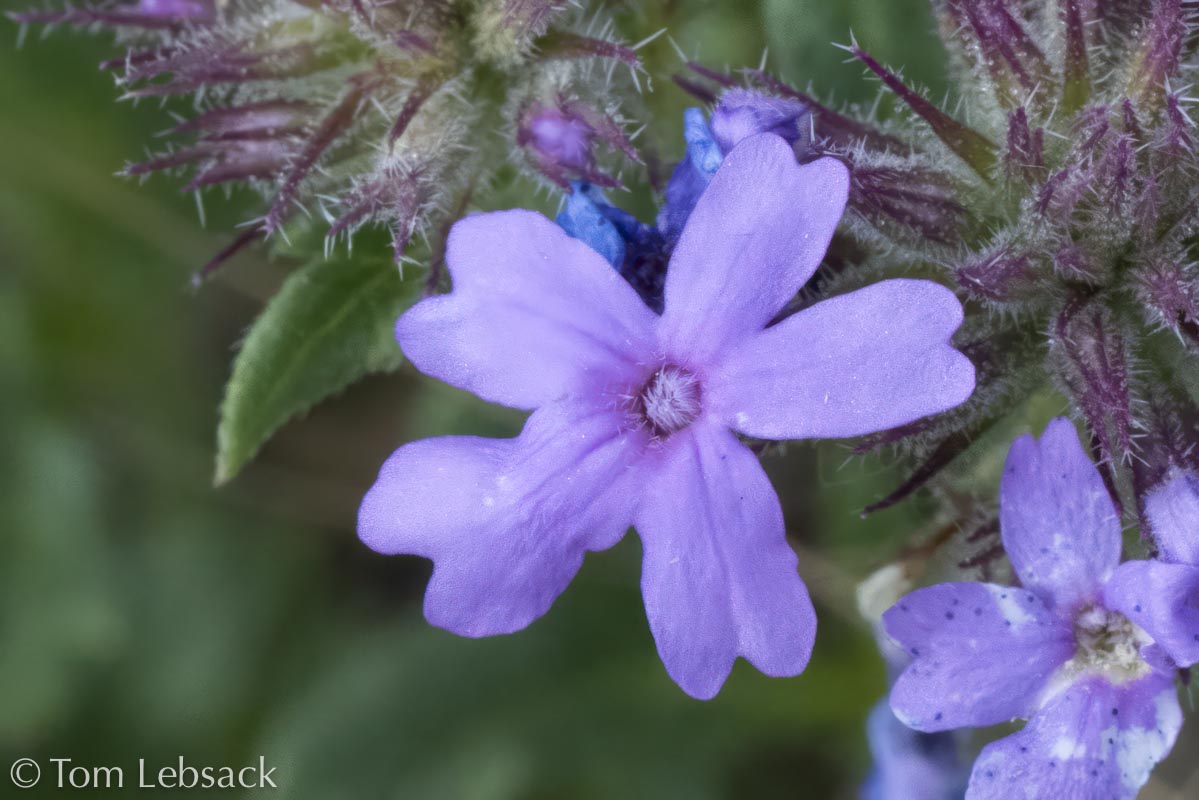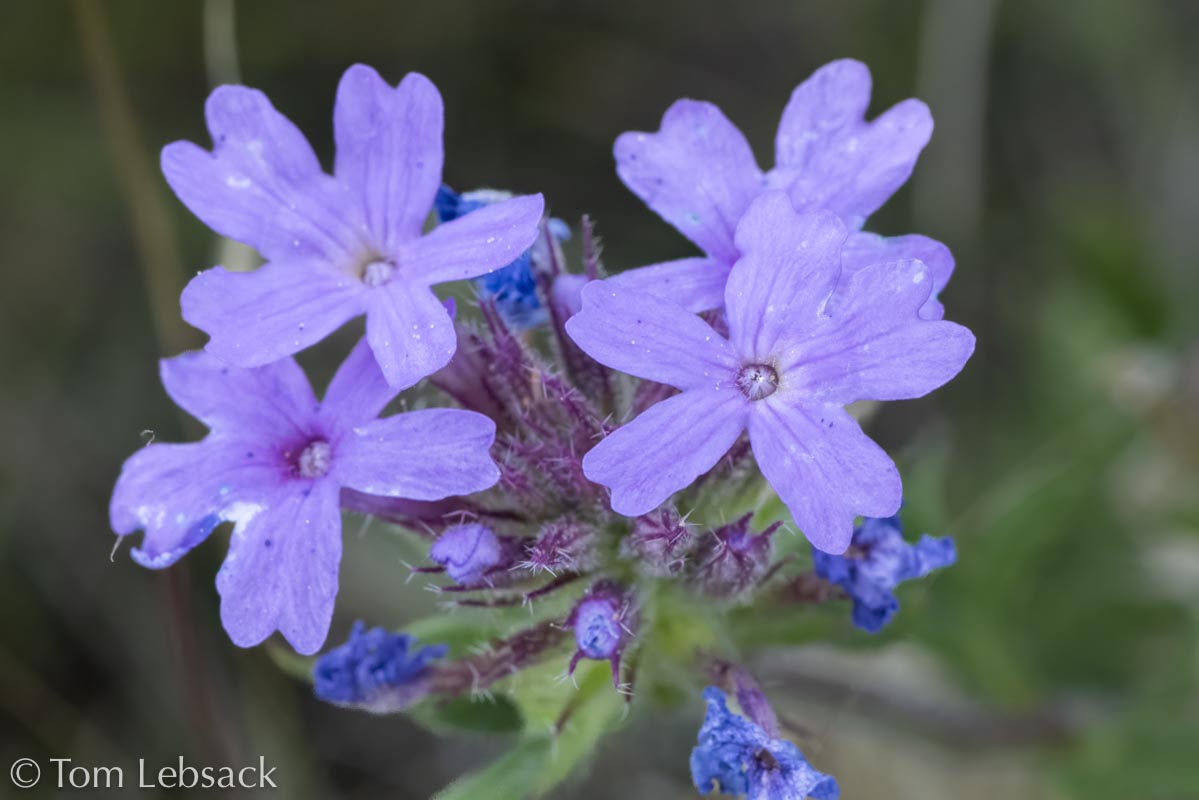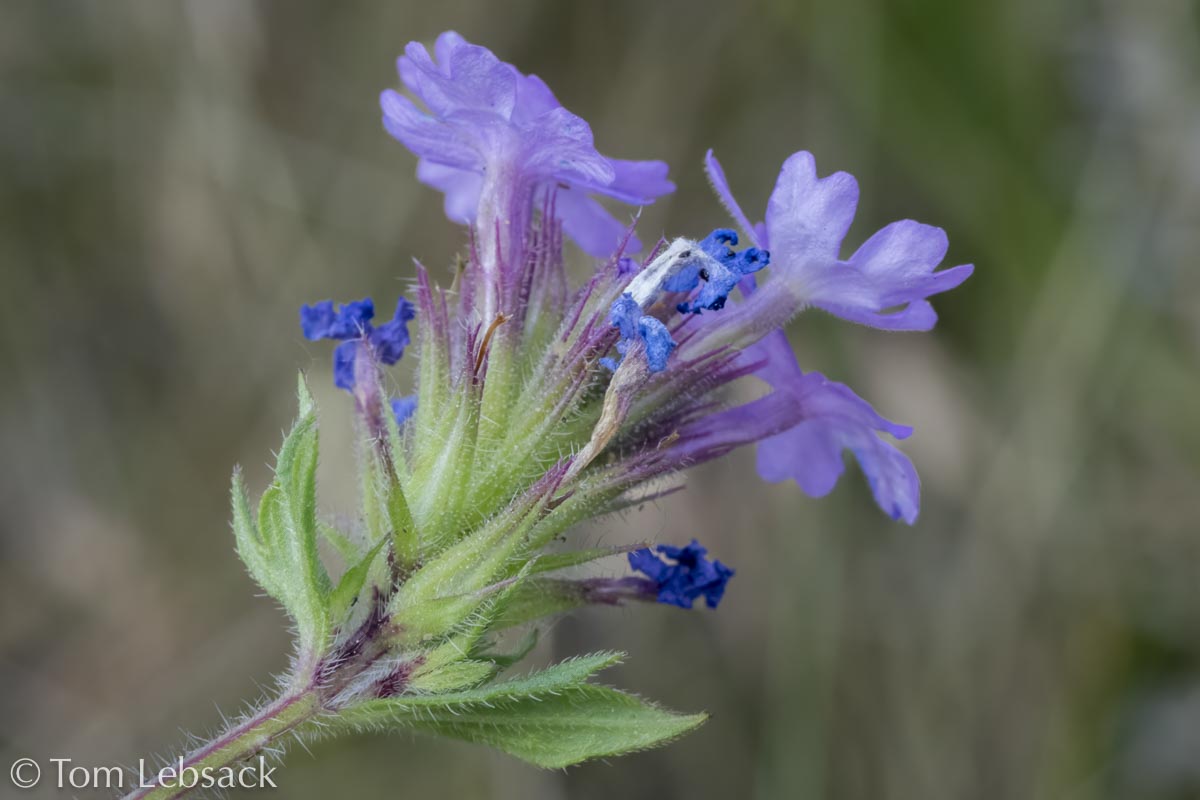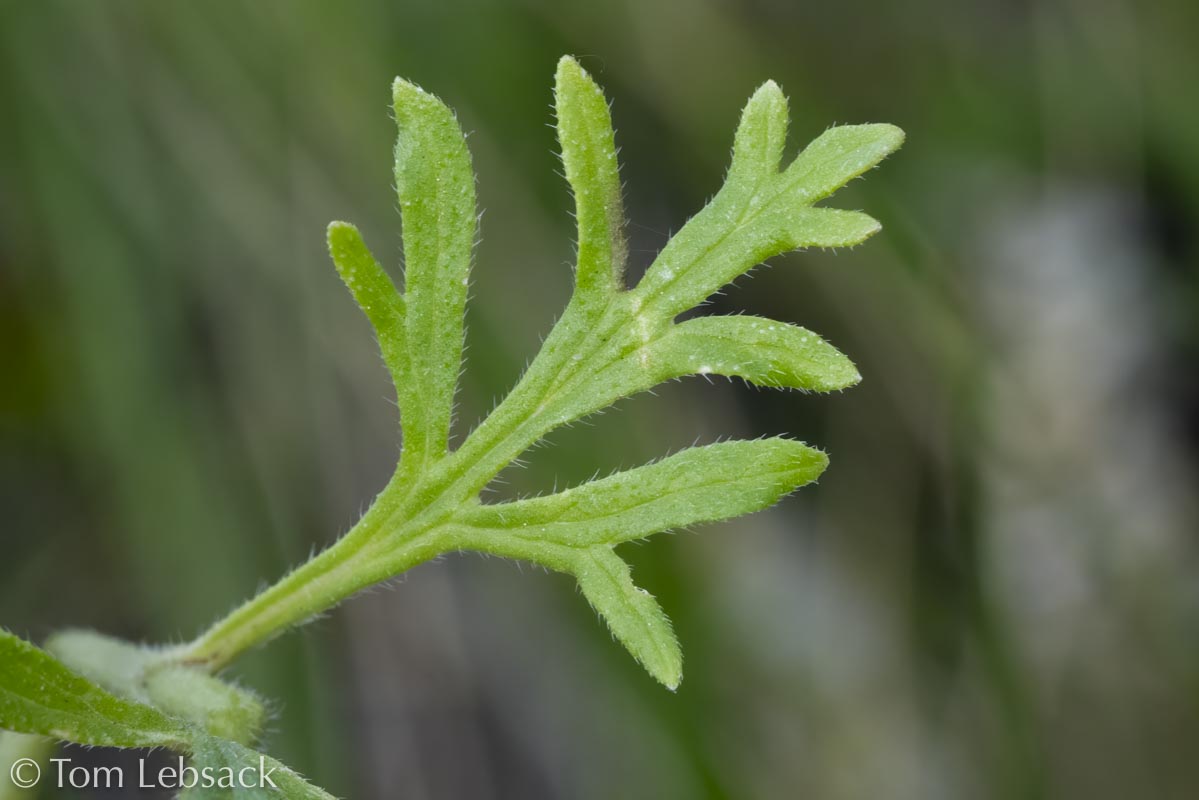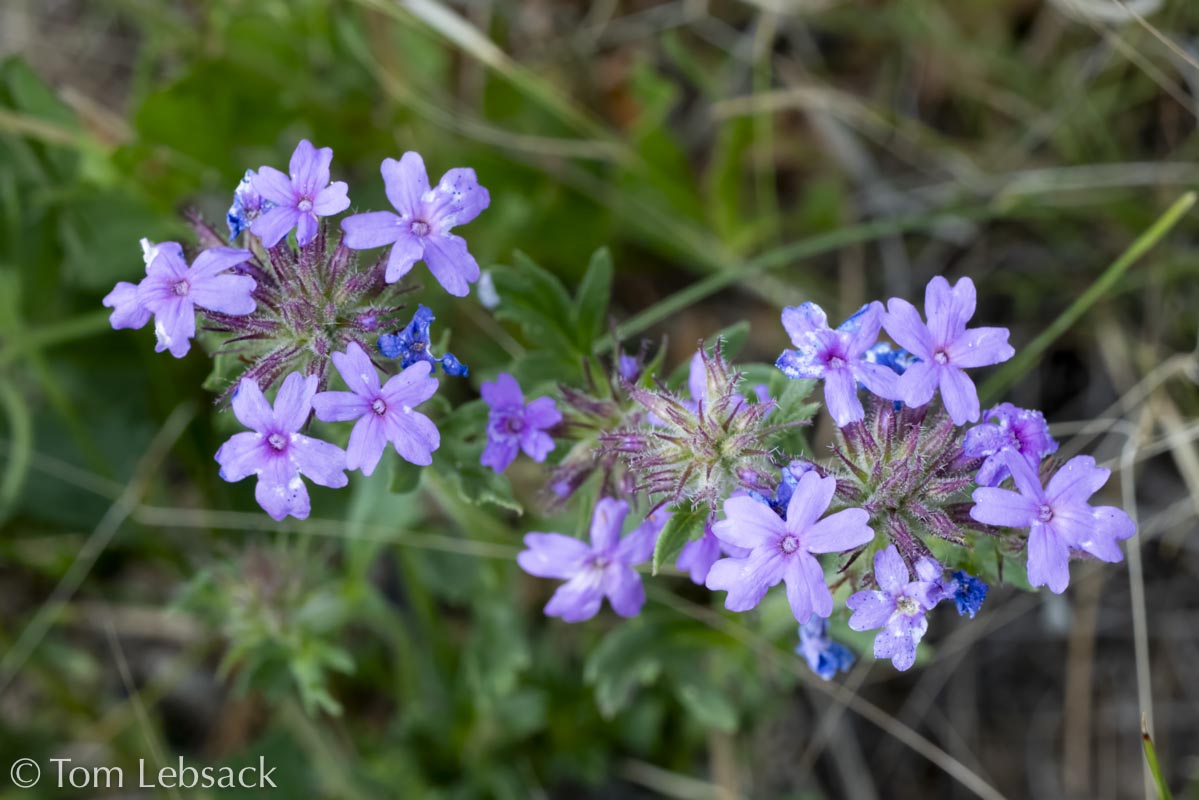Glandularia bipinnatifida
(Dakota Mock Vervain)
| Scientific Name | Glandularia bipinnatifida (Verbena bipinnatifida) | USDA PLANTS Symbol | GLBI2 |
| Common Name | Dakota Mock Vervain, Prairie Verbena | ITIS Taxonomic Serial No. | 502783 |
| Family | Verbenaceae (Verbena) | SEINet Reference |
Click Here |
| Description | Life zones and habitat: Plains and foothills (3800 to 7300 ft.); sandy or rocky soils in plains, pastures, meadows, open woods, washes and streamsides. Plant: Multi-stemmed perennial, reclining stems branching from base, up to 2 feet long with tips ascending 4 to 12 inches high, herbage with stiff, bristly hairs. Leaves: Opposite and petiolate, blades deeply incised to bipinnately-lobed, 3/4 to 2-3/8 inches long, the lobes linear or oblong. Inflorescence: Many showy blue-purple-pink flowers 1/4-inch across grouped in short, dense terminal spikes; corolla with 5 spreading lobes with tube up to 1-1/2 times longer than the calyx; each flower subtended by a pointed linear bractlet longer than the calyx; calyx covered with stiff hairs, but not glandular. Bloom Period: April to September. References: "Flora of Colorado" by Jennifer Ackerfield, "Manual of Vascular Plants of Texas" by Correll and Johnston, "Wildflowers of the Texas Hill Country" by Marshall Enquist, and SEINet. |
BONAP Distribution Map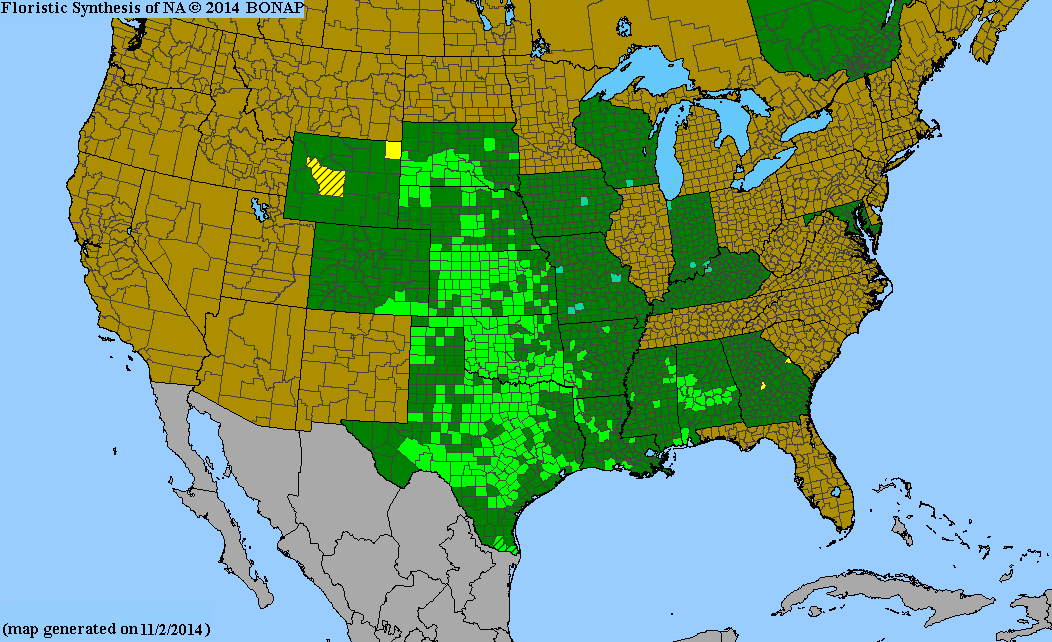 Map Color Key Map Color Key |
Colorado Status: Native |
© Tom Lebsack 2025
Banner photo: Castilleja rhexifolia and a brewing storm over the San Juan Mountains
I try to provide accurate, up-to-date, and relevant information, but cannot guarantee the completeness or accuracy of any information presented on this website. I use authoritative references to insure high standards of accuracy and review and update the information frequently.
